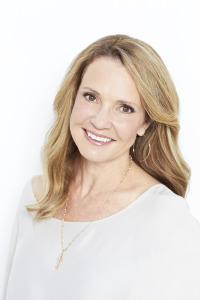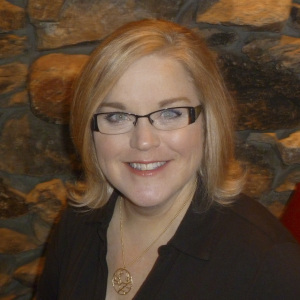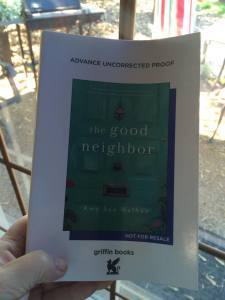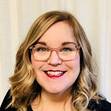Amy Sue Nathan's Blog: Women's Fiction Writers, page 23
July 14, 2015
Guest Post: Author Laura McNeill’s 11 Tips For Writing Domestic Suspense
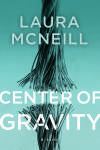 It’s summer and domestic suspense is HOT! What makes me want a guest post about domestic suspense on WFW? Because many of these novels today feature women as their protagonists, and when you read Laura McNeill’s post, you’ll see how the advice transcends any strict genre lines you (we!) may have conjured up in our heads. I mean, who doesn’t want some suspense in any novel? If all the answers are right there, why bother turning the page?
It’s summer and domestic suspense is HOT! What makes me want a guest post about domestic suspense on WFW? Because many of these novels today feature women as their protagonists, and when you read Laura McNeill’s post, you’ll see how the advice transcends any strict genre lines you (we!) may have conjured up in our heads. I mean, who doesn’t want some suspense in any novel? If all the answers are right there, why bother turning the page?
My favorite bit of advice below is #7—Make Things Worse, because that’s the hardest part for me and I know how important it is. Which piece of writing advice speaks to you? Please tell us in the comments!
And most importantly, today is pub day for Laura’s CENTER OF GRAVITY!!! Congratulations, Laura!!
Amy xo
11 TIPS FOR WRITING DOMESTIC SUSPENSE
by Laura McNeill
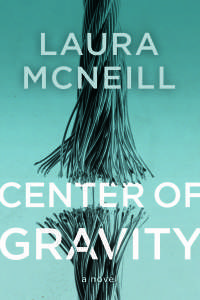 A certain air of mystery and magic surrounds this whole writing business. Certainly, some authors are practically born into brilliance and fame, but for the rest of us mere mortals, there’s no secret formula, pixie dust, or wand that makes novels out of thin air.
A certain air of mystery and magic surrounds this whole writing business. Certainly, some authors are practically born into brilliance and fame, but for the rest of us mere mortals, there’s no secret formula, pixie dust, or wand that makes novels out of thin air.
I still consider myself lucky. Story ideas simply arrive in my brain. Sometimes the notions trickle in; sometimes they swarm like hornets. For me, story ideas are the easy part.
You can think about story ideas like presents. They arrive in lovely packages with ribbons and bows. On the surface, they look perfect; pristine. Peel back the scotch tape, remove the tissue paper, and you might find a diamond in the rough. Sometimes, all you get, though, is an ugly sweater from Aunt Mildred.
The good news? There’s always another idea. And another. Until you land on “the one” — the idea you can’t let go of; the idea that speaks to you at night and draws you to your keyboard.
That’s when the real work begins. For suspense authors, in particular, the next 80-90,000 words are tricky and challenging. After all, once writers have captured readers’ attention, it’s their job to keep readers off balance and guessing until the bitter end.
Think about domestic suspense novels like a family road trip gone horribly wrong. You have your destination set, a GPS to guide the way, and a full tank of gas. The bags are packed, the kids are buckled in tight, and so far, they’re not fighting. Life is good, the sun is shining, and traffic is light.
A few miles in, boom! A log truck overturns, there’s an earthquake, or better yet, an escaped convict runs out of the woods…straight into the path of your car. Life, as your characters know it, turns upside down in an instant. A good start, but how does an author keep readers up past midnight?
Here are 11 suggestions for doing just that.
Character – Create characters your readers care about. Make your protagonist likable and relatable; not perfect. Develop slightly heroic traits without being sappy. An underdog is fine, as is a James Bond-like character, as long as he (or she) has a few flaws.
An Inciting Incident – In the beginning of the book, whatever the character is dreaming about, hoping for, or expects disappears in an instant. Gone is the protagonist’s comfort zone and familiar world. Enter a brand new set of problems to be solved.
Conflict – The problems introduced can’t be a few bumps in the road. They are life-altering changes. The new situation disrupts your character’s world entirely, like being dropped into a new country where the character doesn’t speak the language (and oh yes, with snipers or serial killers around every corner)
A Goal – Your character must have a goal, and there must be consequences for not reaching it. Think about Katniss Everdeen inThe Hunger Games. After volunteering as tribute to protect the life of her sister, Prim, Katniss must fight to the death. Before she leaves for the Capitol, Katniss promises she’ll try and win the Games, a seemingly insurmountable task.
Doubt – Character flaws should cause moments of self-doubt. That doubt could be caused by a bad childhood, a secret, or a scary incident from the past. It could root from a beating or a bad relationship. In moments of great conflict or despair, those flaws and doubts will test your character’s strength and will.
Dialogue – Keep it real. Dialogue should be current and authentic to the time period, location, and culture. Listen to how people speak. They don’t converse in complete sentences. They interrupt. They argue. They kiss and make up. They do not sit around, drink tea, and talk about the weather.
Make things worse – Take away someone your character trusts. Cut off the character’s support system and have the main character feel and grieve that loss. Pile on the setbacks and problems, and you’ll ramp up tension with each new layer.
Leave Early – Especially if you’re an author who writes stories with multiple points of view (POV), end a chapter’s action early. Make your reader wait through the next narrator’s chapter to find out “what happened.”
Don’t Info Dump – Especially in the first fifty pages, leave out back story. There’s no need to share your character’s entire life history, down to the socks he wore in the third grade. It’s much more exciting to add details on a need-to-know basis for the reader. Maintain a little mystery and dole out information in tiny bites.
Offer the unexpected – Stir curiosity by having a character react in a different manner than your reader might expect. Write in a twist. Surprise them with a new character. Provide a puzzle that needs a solution. Present a new dilemma prior to the climax, so that the character has a moment when he or she feels all is lost. This makes the conclusion so much sweeter.
A satisfying ending – Allow your character to change and grow. Let your hero or heroine learn a lesson. It’s gratifying to have a character become smarter, stronger, and wiser, but, again, not perfect. A satisfying ending can leave a few loose ends.
Ready to try your hand at domestic suspense? Go ahead, find your story idea. Look among the presents, unwap with care, and check for ugly sweaters. If you happen to find a magic wand, let me know! I’ll be up; reading past midnight.
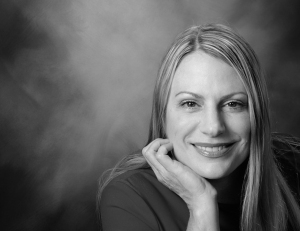 Laura adores hot coffee, good manners, the color pink, and novels that keep her reading past midnight. She believes in the beauty of words, paying it forward, and that nerds rule the world. Laura is a fan of balmy summer nights, fireflies, and pristine mountain lakes. She lives in Mobile, Alabama with her two sons.
Laura adores hot coffee, good manners, the color pink, and novels that keep her reading past midnight. She believes in the beauty of words, paying it forward, and that nerds rule the world. Laura is a fan of balmy summer nights, fireflies, and pristine mountain lakes. She lives in Mobile, Alabama with her two sons.
You can find Laura Tweeting @Lauramcneillbks and blogging at lauramcneill.com. Order Center of Gravity on Amazon.








July 11, 2015
Curiosity Might Just Kill The Author
If you’re a writer putting your work out there for others to read, at some point you’ll hear the advice: Do not read your reviews. Oh, you’ll do it anyway, at least for a while, but those bad reviews can sting. Well, at least when they’re coherent they can.
Bad reviews also sting because writers have feelings. (This seems to be a missing cog in some reviewers’ wheels.)
If we didn’t have feelings, we wouldn’t be able to write anything worth reading. We internalize what we read and what we see. That’s how we have enough mishegas—craziness—in our heads to need to GET IT OUT onto paper. For others to read. And review. Apparently so that we have more to internalize. Because we internalize what we read. (See a pattern emerging?)
And that’s what brings me to this next bit of advice that no one ever shared with me. I’m giving you this to your straight to save you all some heartache and to save you a trip to the reflecting pond. Because you know we all go there anyway. No need for extra travel.
Do not read the long bios of other authors.
I did this so you don’t have to.
Have a great time reading the short snappy ones on the back of the book, but back away from the long ones. You know the ones I’m talking about. The ones tucked away or maybe even highlighted online that outline a lifetimes of degrees, travels, accomplishments, and diseases cured. Or the ones that detail the scuba diving prowess, the years digging wells in underprivileged countries, the Fortune 500 job ditched when a novel written on weekends hit it big.
Until I fell down the online rabbit hole of author bios, I’d really considered writing the great equalizer of my life. You write, I write, we have something in common. That’s all we need. Writing is an intense gig, writers can talk about a paragraph for hours.
But, for some reason, these compacted lives just toppled me. Had fact that I’d not done any of those important things tipped the scales in someone else’s favor? What else had I missed out on? I didn’t have time replant forests and living in a hut or in Dubai was not an option. I started raising kids in 1992. But some of these authors have also raised children (although my daughter assures me there is no way these people have friends).
I insisted to myself I am the only published author in the universe without a master’s degree in something. Had everyone been required to join the peace corp or save dolphins or spearhead urban gardening initiatives? And why didn’t I get the memo?
In those few moments of hazed uncertainty I was sure that while I was following my ex around the country while he followed his dream everyone else was intentionally padding their future curricula vitae for a website they didn’t even know would exist—when it never even occurred to me to do anything but what I was doing simply for the sake of doing it.
Where was everyone else who did nothing?*
While some of my everyday and everything friends are writers, I don’t know too much about most of my writer friends other than their writing, and the tidbits they share on social media. Cute kids and sports. Cute kids and school. Cute kids and awards. Inspirational quote. Pedicures (which I hate). Vacations. Food.
Is it better that way? Keep Writerland Clean? Is that our motto? Writerland is the place I belong. With a few exceptions, it’s my favorite place.
When I took a breath and a step back (which required assistance), I realized that none of the things I read about on any of these bios are things I wished I had done. Ever. Not one. None of them interested me, they just impressed me. And there’s a difference.
Your path, my path, his path, her path. It doesn’t matter how we differ as writers, what matters is what makes us the same. That’s the secret sauce for the writing life. That it is a great equalizer. (So go! Climb your mountain! Sail your seas! I’ll be right here when you get back!) And all that good stuff is exactly what I remembered after letting off some of my under-achieving steam with the help of a wonderful writer friend. One with a Ph.D.
But we didn’t talk about that.
Amy xo
* I am fully aware I did not spend my life doing nothing. I am proud of the kids I raised, the person I am, the things I’ve done. But now I have to go dig a well in my backyard for underprivileged suburban bunnies. Cya.








July 8, 2015
Author Interview: Kelli Estes Talks About Her Debut Novel: The Girl Who Wrote In Silk
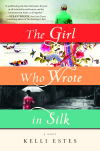 After emailing and interviewing debut author Kelli Estes, I’m confident in saying, YOU’RE GOING TO LOVE HER. The description of her book will give you the chills, her publishing journey will inspire you, and her advice will ring true.
After emailing and interviewing debut author Kelli Estes, I’m confident in saying, YOU’RE GOING TO LOVE HER. The description of her book will give you the chills, her publishing journey will inspire you, and her advice will ring true.
At least that’s what happened to me!
Please welcome Kelli Estes to WFW!
Amy xo
Debut Author Kelli Estes Talks About Her Debut Novel: The Girls Who Wrote In Silk
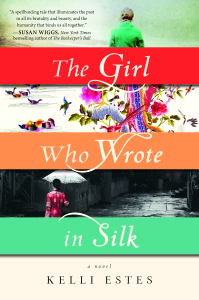 Amy: THE GIRL WHO WROTE IN SILK was inspired by a true story. Would you share a bit of that story with us and how it influenced your novel and characters?
Amy: THE GIRL WHO WROTE IN SILK was inspired by a true story. Would you share a bit of that story with us and how it influenced your novel and characters?
Kelli: From around 1850 to 1906 Chinese people in the U.S., primarily in western states, were the object of intense hatred and torment. Communities would drive the Chinese out by force, or they’d threaten them and intimidate them with violent night raids and arson until they left on their own. Many were murdered. In Rock Springs, Wyoming, gangs of British and Swedish miners attacked Chinese miners, instantly killing 28 and wounding 15, some of whom later died. Hundreds more were driven into the desert. As the Chinese homes and bunkhouses were burned, the bodies of the dead and wounded were thrown into the flames. In Squak Valley (Issaquah), Washington, a band of white and Native American farmworkers who were angry at the Chinese hop pickers because they earned higher wages fired into their tents and murdered three Chinese men. In 1887 thirty-one Chinese miners were slaughtered in the Snake River massacre at Hell’s Canyon along Oregon’s Columbia River by a gang of white farmers and schoolboys.
The Girl Who Wrote in Silk takes place in Seattle where the Chinese people, who numbered around four hundred, really were driven from their homes on February 7, 1886 by an angry mob of fifteen hundred who herded them down to the docks and tried to force them to buy passage on the Queen of the Pacific steamer bound for San Francisco. Thankfully, some level-headed officials got involved and the Chinese were given the choice to leave or not. If they chose to stay, they were protected. I veered from true history in my story because I thought it important to show the horror that people were experiencing in other communities. Every mention that I make in my book of violence in other cities such as Tacoma, WA (where all 500 Chinese were successfully driven from the city, their homes and businesses torched) is true and accurate.
The Girl Who Wrote in Silk is told in two time periods, present-day and historical starting in 1886. My historical heroine is a Chinese girl driven from her Seattle home and forced aboard a steamship where tragedy strikes. She later tells the truth of what happened that night through the stories she embroiders on silk. Over a hundred years later my present-day heroine, a Caucasian, finds the embroidery and learns the truth, as well as how that truth impacts her own family.
Amy: Can you share your publishing journey, from first draft to book shelf?
Kelli: Although The Girl Who Wrote in Silk is my first published novel, it was my sixth complete manuscript (400 pages). It took 15 years of writing, rewriting, submitting to agents and editors, pitching at conferences, and learning everything I could from other authors before I sold, and I don’t think any of that time was wasted. Those 15 years was my apprenticeship in writing and, in a way, the fact that it didn’t happen for me until now is perfect. I wasn’t ready before, but now I am, both in the area of writing and because my kids are older (I have two boys, ages 10 and 13).
This story was a finalist in the mainstream category of the Pacific Northwest Writers Association literary contest in 2012. Wearing that “Finalist” ribbon on my badge proved to be an excellent vetting process for agents and editors during my 3-minute pitch sessions. They took me more seriously than they might have otherwise. My agent today is one to whom I pitched at that conference. I also pitched to a Sourcebooks editor who requested my manuscript, though I didn’t hear back from him. Months later, as my agent was getting ready to go out on submission with my book, I got an email from a different editor at Sourcebooks asking if the manuscript was still available. She’d inherited the desk from the editor I’d pitched to, found my manuscript, and was interested. She ended up being the editor who bought the story. My agent was later able to sell audio rights as well as some foreign language rights. Next week, three years almost to the day, I’ll again be at the PNWA conference, but this time I’ll be signing my published book!
Amy: I read on your website that you didn’t realize writing was an option as a career (we’re so lucky that changed). What was your initial writing process like as a “newbie” and how has that evolved?
Kelli: You’re right, I believed writers were magical beings very unlike my boring self. Thankfully I met a “regular” person who was writing a book and that gave me the idea that maybe I could try writing, too. At first it was difficult and, though I completed a full manuscript that first year, I later realized that manuscript didn’t have a plot. It was a story that bounced from one event to the next with no real purpose or conflict. That experience showed me all the many things that I needed to learn. Luckily, I was a member of Romance Writers of America at the time and started attending every meeting and conference I could in order to learn from top-notch writers. I encourage writers who write romance to join RWA because I don’t know of any other writing association more supportive or educational than RWA. I wrote my first few books after my kids went to bed at night or on weekends when my husband was home.
Today I plot in great detail before writing my books, though I give myself permission to veer from the plot as I get to know the characters deeper or some new conflict arises during the writing. I also have more time to write now with my kids in school all day. The experience of being published and working with professional editors grew in me an appreciation for the revision process. Like my son’s teacher says, “When you think you’re done, you’ve only just begun.” So true. It’s during the revision process that a book comes alive.
Amy: As a debut author, what was the best piece of writing or just general advice you received from another author or read online, etc? What made that stick and how did it effect you?
Kelli: Early in my writing I met author Jane Porter (IT’S YOU, FLIRTING WITH FORTY) who gave me the advice to write what speaks to you rather than what you think will sell. I thought I took the advice to heart right away, but I didn’t really get it until after my fifth manuscript was receiving a lot of close-but-not-quite rejections and I was depressed. I stopped writing for several long months and I questioned if I should give up writing all together. During those months I journaled a lot, read career-guidance books, and searched my soul about what I wanted in my life. In the end I realized that I wasn’t suited for anything other than writing and no matter what, I was going to keep writing and create a career out of it because writing nurtures my soul. It’s part of the reason I’m on this planet (the other part is to be a mom to my boys).
When I started the manuscript that would become The Girl Who Wrote in Silk I gave myself permission to take as long as it needed to complete the book (no more worrying that I wasn’t writing fast enough), I allowed the story to go in whatever direction it needed to go (no worrying about genre conventions – I consciously decided not to even think about where it would be shelved at a bookstore), and I promised myself that this book would get in the hands of readers whether that was through traditional publishing or electronic publishing. I wrote the story and I finally understood, down to my bones, what Jane Porter meant about writing what speaks to me. I care for this story and these characters more than I have ever cared before and I think it shows in the writing.
Amy: What’s your best advice for another aspiring author?
Kelli: Truly, I believe in the old saying about success being about preparation meeting opportunity. Do your “apprenticeship” time. Learn all you can about the craft of writing and, most importantly, write a lot and pay attention to where your personal writing weaknesses are, and then find someone to teach you how to improve in those areas. Become the writing professional you want to be, act it, live it. When the opportunity you are looking for arises – agent? publishing contract? – you will be ready to launch. Oh, and, write from that place deep inside of you that has something to say.
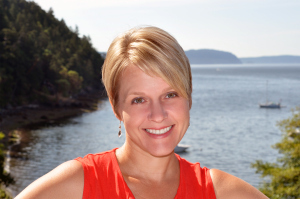 Kelli Estes grew up in the apple country of eastern Washington before going to college at Arizona State University. There she learned she needs to live near water and where all four seasons can be experienced, so she moved to Seattle after graduation. There, she bought airplane parts for four years before finally getting the courage to try her hand at writing. Six manuscripts, two babies, and fourteen years later, her dream of a writing career came true with the publication of The Girl Who Wrote in Silk which was an Indie Next pick for July 2015.
Kelli Estes grew up in the apple country of eastern Washington before going to college at Arizona State University. There she learned she needs to live near water and where all four seasons can be experienced, so she moved to Seattle after graduation. There, she bought airplane parts for four years before finally getting the courage to try her hand at writing. Six manuscripts, two babies, and fourteen years later, her dream of a writing career came true with the publication of The Girl Who Wrote in Silk which was an Indie Next pick for July 2015.
Kelli now lives thirty minutes from Seattle with her husband and two sons. When not writing, she loves volunteering at her kids’ schools, reading, traveling, going out to eat, exercising (because of all the eating), and learning about health and nutrition. Connect with Kelli at http://www.kelliestes.com/.








July 7, 2015
A WFW Book Review: Sweet Forgiveness by Lori Nelson Spielman
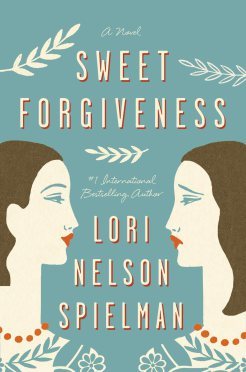
If you’ve read Sweet Forgiveness by Lori Nelson Spielman, it won’t come as a surprise to you that I loved the book. Now, let’s not get all caught up in the fact that Lori and I are friends, because if I didn’t love it I would not, under any circumstance, say that I did. I also wouldn’t have blurbed the book or be writing about it here. I would say nothing at all because that’s how I roll.
Here’s my blurb:
“Filled with warmth and humor, Lori Nelson Spielman’s SWEET FORGIVENESS is a novel about family that will make you rethink everything you know about forgiveness and love. Lori Nelson Spielman is an insightful storyteller who captures your heart and keeps you turning the pages.”
I’m not partial to book reviews that summarize — so I’ll tell you why I loved Sweet Forgiveness and let you read the story yourself.
Sweet Forgiveness introduces us to its main character, Hannah Farr, who’s a talk show host dating the city’s mayor, we think she’s got a pretty good life, until Lori skillfully reveals how perfect isn’t always perfect underneath. And, while I grew sympathetic for Hannah and wanted all things to go right for her, I learned she has secrets, and not very nice ones. So while she sets off on a journey to figure out her past and find forgiveness, as a reader I struggled with the fact that I was rooting for someone who might not be all that likable all the time.
Which means Lori did a great job with Hannah Farr!
Just recently I’ve read a few Facebook posts and threads about unlikable characters, and commented that readers are sometimes surprised that the unlikable factor is INTENTIONAL. That authors want to make their readers bristle sometimes, that we want readers to question the choices and decisions of the characters. That writers don’t just throw down a story, that many of us want to make readers think. Even if just a little bit.
That’s the core of Sweet Forgiveness — yes, there is a great hook with “Forgiveness Stones” that become all the rage. But beyond that is the question of what’s forgivable? Who’s forgivable? And is it more important that someone else forgives you or that you forgive yourself?
And, woven into the seriousness of this tale is a lot of lighthearted and romantic themes as well. I love a story that allows me to breathe. Sometimes at least. Part of Sweet Forgiveness that I enjoyed the most was that I wasn’t always worried about Hannah (I get quite involved with characters and stories), that sometimes I was given the chance to just enjoy her.
On another note, this book is personal for me because years ago, on a girlfriend getaway in Michigan, Lori and I sat in our B&B and late at night, Lori said, “I have this idea for a story about these Forgiveness Stones…”
And now it’s a book. And my friend is a bestselling author. Cool, right? Even cooler because I loved the end result. And get to share it with all of you.
Amy xo
Lori Nelson Spielman is the author of The Life List. A former speech pathologist and guidance counselor, she currently works as a home-bound teacher for inner-city students. Lori enjoys running, traveling, and reading, though writing is her passion. She and her husband live in East Lansing, Michigan.
Click to view slideshow.








July 2, 2015
Author Interiew: Barbara Claypole White Shares Writing Advice She Wishes She’d Gotten
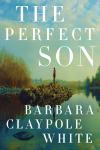 No one has more insight into the fictional world of a dysfunctional family than my friend, Barbara Claypole White. Her third novel, THE PERFECT SON, like her other novels, explores the impact of mental illness on family dynanics and she does this from the inside out, allowing readers unprecedented access to her characters and their lives.
No one has more insight into the fictional world of a dysfunctional family than my friend, Barbara Claypole White. Her third novel, THE PERFECT SON, like her other novels, explores the impact of mental illness on family dynanics and she does this from the inside out, allowing readers unprecedented access to her characters and their lives.
But today I wanted to talk to Barbara about writing and publishing! So we did! Her road has been long and winding — and look where she is now. THE PERFECT SON already has 500 reviews on Amazon and it launched YESTERDAY!
Please welcome Barbara Claypole White to WFW!
Amy xo
Author Barbara Claypole White Shares Writing Advice She Wishes She’d Gotten
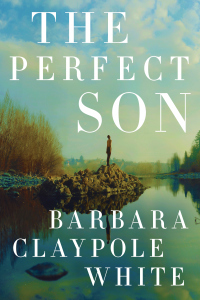 Amy: A virtual hug for you, my friend! And huge congratulations THE PERFECT SON, your third (THIRD!) novel. As with your other books, THE PERFECT SON deals with family dynamics and mental illness. But today we’re going to talk about writing and publishing, just to shake it up a bit!
Amy: A virtual hug for you, my friend! And huge congratulations THE PERFECT SON, your third (THIRD!) novel. As with your other books, THE PERFECT SON deals with family dynamics and mental illness. But today we’re going to talk about writing and publishing, just to shake it up a bit!
From The Unfinished Garden to The In-between Hour to The Perfect Son, what changes have you seen in publishing and what do you think has effected you the most?
Barbara: I have a limited perspective, but it’s clear that publishing, like other creative industries, is changing rapidly. It used to be relatively simple with New York and a few outliers. Today we have choices that range from self-publishing, to online publishing, to traditional publishing. And no one knows how everything’s going to shake out. There are more choices and there’s more competition in what has become a flooded market. Trying to stand out is harder than ever, and authors are caught in the middle of a technological and economic war in which allegiances between the key players shift constantly.
And the mid-list is, to quote Bob Mayer, getting creamed. A-list authors have the luxury of being treated well by their publishers and getting book tours, a big share of the dwindling promo dollars, etc. One of my friends was even given a New York stylist to help him dress appropriately for his book tour. Most of us in the middle are merely treading water with leaky life vests, trying not to drown as we eek out our pitiful marketing budgets. And sometimes we occupy complicated positions to survive.
I straddle two camps. My new book is with Lake Union, which is an imprint of Amazon Publishing (for the record, I’m a book lover with a well-used Kindle), but I’ve always been committed to supporting independent bookstores. I go to tons of local author events and buy local when I can. But I’m not a fan of black and white thinking, and I never see the world in terms of good guys and bad guys. Come on, people—character development 101.
Fortunately I’m immune to criticism for my move to Amazon. From day one of my career, I’ve experienced publishing prejudice. My first two novels are with MIRA, the literary-commercial imprint of Harlequin. Write relationship stories and stamp the word Harlequin on your cover, and you develop a thick skin overnight. (Several of my early reviews for THE UNFINISHED GARDEN started with, “I would never have picked this up if I’d realized it was a Harlequin.”) Even a family member made snide comments about me being “one of those authors,” and I spent my life explaining to people that despite being with Harlequin, I didn’t write romance.
I was thrilled to start my career with MIRA. They have amazing editors, and I will be forever grateful for everything I learned through my two books with them, but things change and you have to adapt. Now more than ever, adaption is the key to mid-list survival. I enjoy being an Amazon author. I’m treated extremely well, I feel as if I have power and control over my book—and yes, it’s my book and not just a product—and there’s a good chance that for the first time I could make real money doing a job that consumes me and my family seven days a week.
Bottom line, I want to earn a living as a full-time author, and Amazon is my best hope. They understand promotion and can do things for a title’s digital sales that no big publishers can. I saw the power of Amazon last month when THE PERFECT SON was a Kindle First Pick. In the month before my launch date, I sold more copies of the e-book than THE IN-BETWEEN HOUR (print and digital) sold in a year and a half. So go ahead, ask me about life on the Dark Side… J
Amy: How has your writing process changed from book one to book three? And, how has your writing changed?
Barbara: I hope that I’m a better writer, but I’m not sure that my process has changed. I do think that I’ve learned to trust that process more. In other words, I panic less about my deadlines and how the hell I’m going to turn a shitty first draft into a polished story. I’m a very messy writer, and I have to meander through lots of research—mainly one-on-one interviews—lots of colored sticky notes, and an ungodly amount of rewriting. I love what Stephen King says about excavating plot. I think of myself as excavating characters—always tying to dig down to the next emotional level—and that’s how I find the good stuff.
My voice is darkly quirky, and I don’t think that’s changed. Working on craft is, however, ongoing for me, and I do have a better understanding of story structure and pacing than I did when I wrote THE UNFINISHED GARDEN. I even force myself to outline. Shocking, I know, but writing to contract is such a great motivator. I’ve discovered that outlines aren’t scary or restrictive, but they provide a road map that I clearly need. When the clock’s ticking, there’s something reassuring about knowing which direction you’re heading in, even if you decide to take a detour. (I love my detours…)
Amy: Having a novel published is rewarding, but it’s also really hard work. What’s the hardest part for you? What’s the easiest part? (Are there easy parts?)
Barbara: Writing is hard and bloody, but it’s stitched into my very being. I have to write. Writing is my therapy, my escape, and the way I process the world of mental illness. It has certainly helped me find acceptance with my son’s obsessive-compulsive disorder (OCD). I don’t think many people realize that mental illness is treatable not curable. And it can be fatal. You can’t just take a pill and hey presto, no more messed-up brain chemistry. Mental illness is ongoing. It demands constant management, and the strain on a family is incredible.
When I can just write, even when the writing’s hard, I’m at peace. But I do struggle with the author life. I always wanted to be a Bronte sister—without the T.B. and the alcoholic brother. You know, that gloriously romantic idea of writing a novel, wrapping it in brown paper, mailing it off to publisher…and then starting the next one. As an author, there’s so much to juggle, and I feel constantly torn in opposing direction, which is tough when you have a high maintenance family.
So I guess the actually writing is the easiest part. But I would never describe writing as easy. I do have a horrible time starting a new manuscript. I’ve never been one of those people who wakes up and says, “Oh, I had this brilliant idea for a story in the middle of the night and the plot came out fully formed.” I try not to think hateful thoughts about those people, because I struggle to find my plots. In fact, I pretty much struggle with everything until the third draft. That’s when the magic begins.
I also find it hard to walk away when a story’s done. I touch on dark stuff, and anything about mental illness is intensely personal for me. It’s almost as if I have to detox before I can move in with a new set of damaged characters. That slows me down and makes me less productive. Fortunately my lovely agent knows this about me!
Amy: Even though we’re here, on my (cough-award-winning-cough) blog, but tell us how you really feel about social media and the role it plays in today’s publishing and writing climate.
Barbara: Ohhhh. How honest would you like me to be? J It can totally overwhelm you, but I don’t see how you can ignore social media. Personality is a huge part of succeeding in this business, and social media is a wonderful tool for networking with other authors, connecting with readers, and broadening your community. You have to move pretty fast to keep up with it, and I think it’s a mistake to spread yourself too thin. Pick the medium that works for you and do that well. For me it’s Facebook (although I use Twitter for information sharing). I’m considering Instagram, since I take so many photos of my garden, but I don’t have the time or sanity to learn something new right now.
Amy: What’s some writing or publishing advice you wish someone would have given you?
Barbara: Great question. The other day Matthew Quick was talking at my local indie, Flyleaf Books in Chapel Hill, and he kept stressing the importance of authenticity. We hear so much about creating your author brand, but Matthew was talking about producing art that is authentic. I agree. You have to be true to your writing voice and not worry about those readers who will never get you. I write about dysfunctional families, psycho squirrels, and mental illness, and yes, my characters use the F bomb. That puts me outside a lot of people’s comfort zones. But that’s my comfort zone, my passion. It’s what I want to write about; it’s my niche. The other day, when my agent was reading my proposal for novel four, she laughed and said, “Well, it’s classically BCW,” which I loved. It’s not that I want to keep churning out the same thing again and again, but I’ve found my voice and I have no intention of changing that. You can’t please everyone, but you can please yourself. Write for you and then release it into the world. And know the haters are gonna hate.
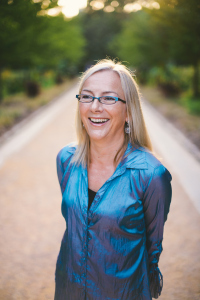 English born and educated, Barbara Claypole White lives in the North Carolina forest with her family. Inspired by her poet/musician son’s courageous battles against obsessive-compulsive disorder, Barbara writes hopeful family drama with a healthy dose of mental illness. Her debut novel, The Unfinished Garden, won the 2013 Golden Quill Contest for Best First Book, and The In-Between Hour was chosen by SIBA (the Southern Independent Booksellers) as a Winter 2014 Okra Pick. Her third novel, The Perfect Son, launched on July 1st, 2015.
English born and educated, Barbara Claypole White lives in the North Carolina forest with her family. Inspired by her poet/musician son’s courageous battles against obsessive-compulsive disorder, Barbara writes hopeful family drama with a healthy dose of mental illness. Her debut novel, The Unfinished Garden, won the 2013 Golden Quill Contest for Best First Book, and The In-Between Hour was chosen by SIBA (the Southern Independent Booksellers) as a Winter 2014 Okra Pick. Her third novel, The Perfect Son, launched on July 1st, 2015.
For more information, or to connect with Barbara, please visit barbaraclaypolewhite.com.








June 24, 2015
Author Interview: Advice From New York Times Bestselling Author Patti Callahan Henry: “Understand Why You Are Telling This Story”
 Did you ever come across someone and there are just so many coincidences you can’t help but acknowledge and celebrate them?
Did you ever come across someone and there are just so many coincidences you can’t help but acknowledge and celebrate them?
Not only was I a reader of Patti Callahan Henry’s books, but then I found out we had the same publisher. And the same editor. And that she was born in Philadelphia, like me.
So, how could I resist another opportunity to share Patti with all of you, to celebrate her eleventh novel (ELEVENTH NOVEL OMG OMG OMG), THE IDEA OF LOVE.
Today, Patti shares her insight and expertise on finding your story and giving it life, and how she approaches novel-writing.
I can’t write a book or a story or an essay without understanding WHY it’s a story I don’t want to tell, but need to tell. At some point my characters take over, it’s their story after all, but hearing this from Patti re-emphasizes that women’s fiction (at least the kind I want to write) comes from a well, and it’s our to reach inside and bring out whatever is there.
Please welcome Patti Callahan Henry back to WFW!
Amy xo
Patti Callahan Henry Advises: UNDERSTAND WHY YOU ARE TELLING THIS STORY
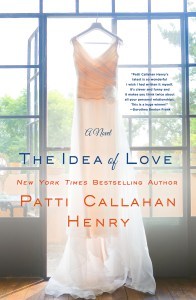 Amy: Yo, Patti! Congratulations to my Philly-St. Martin’s-editor-sister on your newest novel, THE IDEA OF LOVE! In your book, Ella’s husband dies in a sailing accident (this is not a spoiler, folks) while trying to save her, or so she’ll have everyone believe. So, what sparked the idea for the story? Do you remember the moment the idea came to you?
Amy: Yo, Patti! Congratulations to my Philly-St. Martin’s-editor-sister on your newest novel, THE IDEA OF LOVE! In your book, Ella’s husband dies in a sailing accident (this is not a spoiler, folks) while trying to save her, or so she’ll have everyone believe. So, what sparked the idea for the story? Do you remember the moment the idea came to you?
Patti: Hi AMY! My Philly sister. So glad to be here again. I do remember when the seed of the story was planted. But it took me a while to realize it was a story. On book tour, I often hear this, “I have such a great story. Will you write it?” And I often joke that I don’t want to steal their story. But then I started to think, can you really steal a story? What would that mean and what would that look like? I imagined a desperate screenwriter trying to do just that. And then the characters started coming alive, like they tend to do. I added a little twist (not telling) and let it go from there.
Amy: If I counted right (which is math, so there’s always “if”) you’ve had eleven novels and one short story published. What comes first to you? The premise, the characters, or something else? Has that changed with different books?
Patti: What usually comes to me is a “what if” wrapped around a character. So I’d say they are inextricably tied together — the idea and the character. It really hasn’t changed since my first novel. I imagine the story, but I imagine it about someone, not as an abstract idea.
Amy: What’s your work style? Do you plot and plan and theorize, and then write? Or do you sit down and write and see where the story and characters take you?
Patti: Oh, Amy. I’d love to be a plot, outline, notecard kind of writer. I’d also like to have my spices organized alphabetically and my clothes by color and use. But that’s not how I roll. I sit down and wonder the same thing that I hope you wonder, “What will happen next?” Of course it’s not as free-for-all as that, but mostly it is. I do know what it is about. And I spend a long time thinking and free writing about who the characters are and what they want before I start Chapter One.
Amy: In THE IDEA OF LOVE, Ella and Hunter get caught up in a tangle of lies. I’m always fascinated (and often write) about secrets and lies and how people deal with the repercussions. What did you intend for the reader to take away from this part of the story? Or what was your hope? What, if anything, did you learn from writing this (I always learn things from my characters, they’re way more insightful than I).
Patti: Oh, I never have a goal for my readers to “take away.” I believe in the power of story so that they will take away what they want and need. Or at least that is my hope. And you are so right — my characters always teach me things. A couple in this book: People connect through the power of story. Even if those stories aren’t fully true. A connection is forged and empathy is found through the telling of the stories. And also there is power in re-telling the narrative of your life, in maybe even telling how you want it to be instead of how it is. And then there is the story of friendship and how someone can show up in your life in the most unexpected ways and if you remain open and curious, you just might find a new friend.
Amy: It’s true, looks aren’t everything, but look at that book cover! It’s beautiful. As the author, what does it say to you about the book? And did you have a “cover vision” in your head?
Patti: Oh thank you so much! I didn’t have much at all to do with the cover except saying, “OH I love that.” I didn’t have a cover vision in my head. Eleven books later, I’ve learned not to do that very thing because what I see and what the art department sees rarely converge. As the author, this cover seems to say, “What is that dress for? Why is love involved at all?” And as a reader I would want to find out.
Amy: What’s your best advice for aspiring authors of women’s fiction? (Because really, that’s what they’re here for, in addition to adding to their TBR piles.)
Patti: I am so remiss to give out advice because part of the writing process is about finding our own way. Yet, I also believe in the power of a community like this where we can share our stories and then find out what works for us as individuals. So in that light, I’d say, make sure you understand why you are telling this story. What does the character want? Why can’t they get it? How will they get it or something better in the end? Our minds feel comfortable in a narrative arc. We can tolerate discomfort and anxiety in a story when we know that there will be resolution. For me, the heart is the first target.
Patti Callahan Henry is a New York Times bestselling storyteller of eleven books, including The Stories We Tell, And Then I Found You, and Driftwood Summer. Patti lives in Mountain Brook, Alabama with her husband and three children, where she is crafting her next story.
FB: https://www.facebook.com/AuthorPattiCallahanHenry
Twitter: https://twitter.com/pcalhenry
Website: http://www.patticallahanhenry.com/
Pinterest: https://www.pinterest.com/patticalhenry/
Goodreads: https://www.goodreads.com/author/show/207337.Patti_Callahan_Henry








June 19, 2015
I Write Novels For Women. Now, Please. Put On Your Lipstick And GET OVER IT.
As you might surmise from the title of this blog, and because many of you know me by now, I embrace the term women’s fiction. I understand that agents and editors need an idea of what they might be getting from an author, that everyone specializes nowadays, that there are categories and bookshelves (wooden, plastic, virtual) and there needs to be some kind of system, albeit flawed.
But I also don’t mind the label because I WRITE MY BOOKS FOR WOMEN.
Yes, there were men who read The Glass Wives. I think there were six or eight of them (okay, maybe five) and only one or two were related to me. This didn’t bother me at all. Not a smidgen.
I write my books to tell myself a story I don’t yet know, but that I want to know. As the process continues I begin to think about readers, what readers need to engage with my story and make it their own. Those readers I think of are always women. My main characters are women and they’re interacting, mostly, with and because of, other women.
See how that works?
I like my feminine book covers. The only thing I ever said about book covers to my editor was that I felt strongly that my covers represented the tone of what was inside the book. And they do.
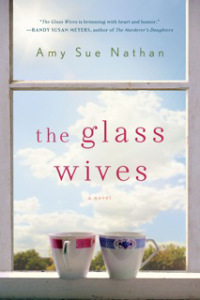
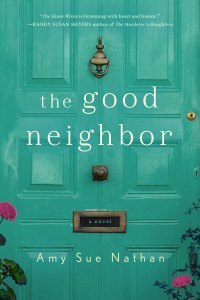
Now don’t get me wrong. There is part of this women-in-publishing uproar I understand and support.
Fact: There is no “men’s fiction” label or category, and books by men about families or relationships are filed under domestic dramas, literary, or general fiction, even if the main character is a woman. That’s wrong, and many are working to change that. Some are working to make sure it doesn’t change.
Fact: Fewer books by women are reviewed, awarded, and recognized by the industry. That’s wrong too. Especially–or perhaps only–when the books written by women really ARE gender neutral and could have mass appeal if not marketed specifically to women.
The problem, as I see it, isn’t writing for women and being proud to do so without reservation and WITH great book covers, the problem is when it is assumed that all books written by women are for women only.
That’s the issue.
It’s okay if you’re a woman and your books appeal to the general public. So it has to be ok if you’re a woman and your books are meant to appeal to women.
There are many people/Tweeters/FBers/writers who explode at the thought of a feminine book cover or women’s fiction label. It’s wrong, they type in all CAPS and BOLD. DON’T FEMININE BOOK COVERS MAKE YOU MAD? WHAT ABOUT PRETTY AUTHOR PHOTOS? AARGH! BOO! HISS!
I don’t know about you, but I do not want to look like a dude in my author photo.
It might be wrong for some, but lipstick and good lighting are right for me.
I want to write books about women that appeal to women. I’m not doing this by accident. It’s intentional as much as it’s organic. Those are the stories of my heart, and those are the only ones I can write. Those are the only ones that keep me up at night, keep me revising a paragraph until my words say precisely what I mean for them to say in precisely the way I mean them to. And with the right cadence. I did it just this morning with the last paragraph of my next novel (not done yet, but when the last paragraph presents itself, you write it).
So while I might resent the fact that women’s fiction gets eye-rolls and shrugs and some people (women) I know say they don’t read “those kinds” of books (what? about PEOPLE?). I say, too bad. Or at least I say it in my head. And I move on.
Not only do you need a thick skin in this business, but a resilient heart.
What I don’t want is to be pigeon-holed, especially by other women, into believing that my stories for women are wrong, that I shouldn’t be writing with only women in mind.
Because that’s wrong too.
When and if I write a book that I believe appeals to a non-gender specific reading public, I’ll jump the fence—right over—while holding my skirt high in the air, so I don’t fall on my face and smear my lipstick.
Until then, I’m over it.
You should be too.
DON’T MISS OUT!
THE GOOD NEIGHBOR ARC GIVEAWAY!
(YES, MEN CAN ENTER TOO!)








June 17, 2015
It’s Book Giveaway Time! One ARC of THE GOOD NEIGHBOR is up for grabs!
In honor of a long-awaited, family weekend with both of my kids and my parents (something that hasn’t happened in about a year and a half) I’m giving away ONE of my precious ARCs (Advance Reading Copies) of THE GOOD NEIGHBOR, which officially lands on readers’ doorsteps on October 13, 2015!
This way I know I can keep you all busy entering and tweeting! I don’t want you getting into any trouble while I’m gone. ;-)
The only thing you have to do is tell me in the comments about your favorite neighbor growing up. (The rest of the entry options are not mandatory.)
When you read THE GOOD NEIGHBOR you’ll meet Izzy Lane, who moves back to her childhood home with her five-year-old son, and right next door to Mrs. Feldman, the woman who has been her surrogate grandmother as long as she can remember. The tables turn a bit as Izzy begins to see she can help Mrs. Feldman as a thanks for all the help she’s given Izzy her whole life.
I wrote this book for many reasons (more blog posts on those as pub day nears) but one was to pay homage to the Northeast Philadelphia street I lived on for 19 years — from the age of 5 until I married and moved away at 26. I didn’t want to write a book set in the 1970s (too much research for me, bowing down to my histfic writing pals) but I did want Izzy to have the same kind of memories I had, the same kind of affection for her city street and neighborhood. And she does.
Philadelphia is a city of neighborhoods, and I am a proud product of one of them. Many neighbors fill my memories, and I’m not silly enough to name a favorite when they all hold a special place in my heart. I’ll write more about my real neighborhood (not Izzy’s, as that is a reimagined cluster of many neighborhoods I know) another time!
Have fun with the giveaway and good luck!
Amy xo
Click here:








June 16, 2015
Author Interview: Carla Stewart Tells Writers: Don’t Be Afraid To Be Unique
 I love interviewing authors for WFW. I think you all know that. Authors like Carla Stewart are the reason why. Today you’ll hear from Carla’s head and her heart on the work and passion of novel writing. A FLYING AFFAIR is her sixth novel. Sixth! I’m in the early stages of novel three and can’t quite think that far ahead, although prolific authors like Carla give me hope that there are readers and a future out there for all of us!
I love interviewing authors for WFW. I think you all know that. Authors like Carla Stewart are the reason why. Today you’ll hear from Carla’s head and her heart on the work and passion of novel writing. A FLYING AFFAIR is her sixth novel. Sixth! I’m in the early stages of novel three and can’t quite think that far ahead, although prolific authors like Carla give me hope that there are readers and a future out there for all of us!
Please welcome Carla Stewart to WFW!
Amy xo
Author Carla Stewart Tells Writers: Don’t Be Afraid To Be Unique
Amy: Your new novel, A FLYING AFFAIR, is set in the time of the Lindberghs and Amelia Earhart. What sparked the idea for Mittie Humphreys and her love of flying? Do you like to fly? (I don’t.)
Carla: Downton Abbey was at the height of its popularity when the idea first came. My editor and agent nudged me to try something different from the fifties and sixties novels I’d been writing. Since I’m a fan of all things British and fascinated in particular with the Roaring Twenties, I decided to go in that direction. A FLYING AFFAIR was part of a three-book proposal that would spotlight strong, talented women who had to overcome to survive and achieve their dreams. The first book featured a women who was displaced from England to America when her husband died in WWI. It didn’t make the cut and instead became the back story for her daughter Nell in THE HATMAKER’S HEART.
For A FLYING AFFAIR, I wanted to contrast the shy British-born Nell (the hat maker) with her free-spirited Kentucky cousin, Mittie Humphreys. Aviation in the twenties was daring and out of the ordinary, so I did some very basic research to see how it would all fit together. Being an aspiring aviatrix was perfect for Mittie. There’s a glimpse of her in THE HATMAKER’S HEART when she takes a joyride in an airplane with a complete stranger. Once I knew what her passion was, the story flowed from there.
As for whether I like to fly, yes I do. I took a ride in a small plane as a child. While it didn’t spark any aspirations of becoming a pilot, I enjoyed the view of the earth from the air and still opt for the window seat when flying. I’m quite enthralled with the different perspective as I try to make out what I’m seeing below.
Amy: A FLYING AFFAIR is your sixth novel. What would you tell debut author Carla if you could talk to her today?
Carla: Relax. What you have to say is important whether the audience is small or world-wide. Falling into the comparison game will strip you of joy and rob your integrity if you let it. The only number that matters is your word count at the end of the day.
That said, be alert and flexible. It’s no lie that trends and technology will change and shape the world of publishing. You have to be able to grow and change with them. In doing so, new vistas will be opened to you that you never dreamed possible. Be ready.
Cherish those who’ve come alongside your debut novel. Editors. Agents. Readers. Friends. Family. Express your gratitude. Not everyone will like your work or understand why you’ve chosen this path. Ignore them and be diligent on working on your next project.
Above all, keep the faith and enjoy the journey. You only get to be a debut author once.
Amy: What tools do you use to make novel-writing work for you and how do you use them? (I’m a colored marker and Post-It note gal myself, and a recent Scrivener convert.)
Carla: No wall charts or trail of cookie-crumb note cards for me. I’ve tried Scrivener (twice!) and found it’s just not organic for me. I guess I’m sort of old-school because I prefer a yellow tablet and pen when I’m brainstorming and plotting. There’s a creative element that’s unleashed with the physical writing of ideas. I’m a note taker and keep every scrap and every scribbled-on napkin in a manila folder when I’m working on a project. I keep separate folders for things that might be useful in other works such as British slang, twenties slang, etc. It can get messy before I’m finished, but later, if an editor has a question, I know where to look. I also bookmark websites and make folders in my browser’s toolbar feature for each book or topic so I can find them with a couple of clicks.
I do have several Excel spreadsheet templates that I use early on. Character charts. Name charts. Basic 3-Act structure charts. I print out the name and character charts and generally make changes to them in pencil as I’m writing and want to change eye color or a nickname or whatever is needed.
Being a very visual person, I love Pinterest. I usually start with a secret board and pin anything remotely related to my book idea. What I love about that is that while I’m writing, I can click on an image and go to the website where it originated. It’s great for crafting description or giving me context for the scene I’m writing. My publisher has collaborated with me on private boards for cover ideas. I make my book boards public a few months before pub date.
Pinterest has been a good branding tool as well. When my nostalgic and historical boards resonate with followers, I have new potential readers for my novels. I’m learning more about marketing via Pinterest, but like most social media, it can be a time sucker so I have to be careful.
I keep my Webster’s 11th Collegiate dictionary handy as it gives the date of origin for words (important for historical fiction) and I rely on my Flip Dictionary in place of a thesaurus.
Amy: When you write a novel, do you think about your reader’s takeaway as you write, or do you let it develop on its own. (I find I’m often surprised at what my characters teach me.)
Carla: Hmmm, that’s an interesting question. I do always have my readers in mind as I’m writing hoping to engage them in a fresh way. As for the takeaway, I’m not sure since that often changes from what I thought originally. While I do a lot of plotting, I have found that character development and the emotional journey which leads to the takeaway can’t necessarily be forced by my will. I am right there with the characters—loving, grieving, struggling, hoping. So I guess, in a sense they are teaching and influencing me in a similar way that they would affect readers. I’ve always felt that my pact with my readers was to deliver them an honest story with the raw edges exposed, but by the last page, I want hope to settle on the horizon.
Amy: What’s your best advice for aspiring authors of women’s fiction?
Carla: Two quick bits: First, don’t be afraid of being unique. That spark that is a tad different from all the other works out there may be just the thing to catch the eye of an editor. Being unique isn’t the same as bending the writing rules or careless writing, but letting your unique voice shine in your work. And no strange fonts, please.
The other thing, and something I struggle with, is going deep into the emotional well. Giving readers a roller-coaster of emotions is what makes your story resonate and stay with them. It’s been said over and over—writing is like opening a vein and bleeding onto the page. There’s a reason for this timeless adage: It’s what makes great writing, especially women’s fiction, stand apart. Don’t shy away from mining those tender spots in your own heart, and your stories will be better for it.
Amy, thank you so much for having me! I appreciate all you do to promote women’s fiction and those who write it. As one of my characters once said, “You’re the gnat’s whistle!” Such a joy to be here today!
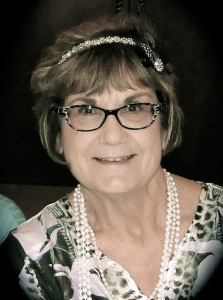 Award winning author of six novels, Carla Stewart’s passion for times gone by is reflected in her heart-warming fiction. It is her desire to take readers to that familiar place in their hearts called “home.” She and her husband live in Oklahoma where they attempt to keep up with the adventures of their seven rambunctious grandchildren.
Award winning author of six novels, Carla Stewart’s passion for times gone by is reflected in her heart-warming fiction. It is her desire to take readers to that familiar place in their hearts called “home.” She and her husband live in Oklahoma where they attempt to keep up with the adventures of their seven rambunctious grandchildren.
A Flying Affair, Carla’s her newest release, has been called rich and complex. Daredevil Mittie Humphreys navigates her heart as well as the skies in this beguiling adventure of grit and determination during the rollicking Roaring Twenties. Learn more about Carla and her books at www.carlastewart.com.
My website: www.carlastewart.com
Follow me on Twitter: www.twitter.com/ChasingLilacs
FaceBook: http://www.facebook.com/carlastewartauthor
GoodReads: http://www.goodreads.com/author/show/3335371.Carla_Stewart
Pinterest: http://pinterest.com/chasinglilacs/
BUY books link (various options): www.carlastewart.com/books/








June 14, 2015
Guest Post: Author Katie Rose Guest Pryal On Finding Courage, From NICU To Novelist
 Just when I think I’m the busy and overwhelmed author—I read a post like this one by author Katie Rose Guest Pryal. Nothing like a little perspective with my morning coffee. (Goes so well with humble pie, which is delicious for breakfast.)
Just when I think I’m the busy and overwhelmed author—I read a post like this one by author Katie Rose Guest Pryal. Nothing like a little perspective with my morning coffee. (Goes so well with humble pie, which is delicious for breakfast.)
Did any major life events or obstacles happened in tandem with your writing or publication? Share your own stories in the comments, and please welcome Katie to Women’s Fiction Writers.
Amy xo
From NICU to Novelist: Author Katie Rose Guest Pryal On Finding Courage
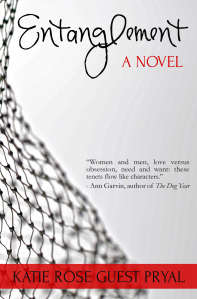 The first book I ever published, I proofed the manuscript while sitting next to my son’s bassinet in the Neonatal Intensive Care Unit at Duke University Hospital. My son, my first child, had been born 6 weeks early. The doctors kept him there in the NICU for a week, feeding him through tubes and warming him on heaters. Baby Boy was so tiny, it terrified me.
The first book I ever published, I proofed the manuscript while sitting next to my son’s bassinet in the Neonatal Intensive Care Unit at Duke University Hospital. My son, my first child, had been born 6 weeks early. The doctors kept him there in the NICU for a week, feeding him through tubes and warming him on heaters. Baby Boy was so tiny, it terrified me.
All parents of preemies know this fear. We have a secret club, in fact. “You had a preemie? Me too.” Then we nod at each other. It’s a thing, I swear.
I sent off the proofs of my book and brought Baby Boy home the same day. The nurses unhooked tiny Baby Boy from all of his tubes and monitors and simply handed him to me.
They said, “He’s yours. Go on, now.”
I was terrified anew. How was I going to take care of this fragile thing all by myself?
I couldn’t care less if I’d missed any errors in the manuscript.
But then, a few months later, I had an active, healthy infant and an ISBN. Authors often refer to the days their books come out as “book birthdays,” and I really do feel like Baby Boy and my writing career were born at the same time.
That first book, which came out in 2009, was not a novel. I write lots of things, including books about writing. At the time Baby Boy was born, I was an English and law professor, and the book I published taught people how to write well about the law.
(Insert ironic lawyer joke here.)
Although I’d earned my master’s degree in creative writing before I ever went to law school or graduate school in English, and although writing fiction was my first love, I’d set writing aside for what I thought were practical concerns—getting an academic job, succeeding in academic ways. I published lots of research papers and presented at academic conferences.
But over the years I came to realize my heart wasn’t in the work. So I kept writing, working on my fiction in the time-margins between my job and motherhood. (Baby Boy #2 came along less than two years after Baby Boy #1, full term and nearly 10 pounds.)
In fact, one of the biggest challenges to writing fiction that I’ve faced is the pull from two directions—from what I thought my career was supposed to be (academia) and what I wanted my career to be (full-time writer).
The day I figured out how to leave my academic job and write full time, which was only last fall, was one of the best days of my life. And it was only after realizing I could walk away from one career and pick up another that I had the courage to finish my novel, submit it until it was accepted, and see it through publication. Finally I had the courage to write more books—a novella, a second novel (in revision), a memoir (in progress). None of these books would have gotten me very far as a professor. Now, they’re my life’s work.
One of the scariest parts of making the career change was setting aside others’ expectations of me. But setting aside my own expectations of me was scary, too.
But here’s the thing: nothing was scarier than walking out of that hospital six years ago without a baby, leaving Baby Boy in his bassinet in the NICU so I could go home and sleep, praying that the phone would not ring, because a ringing phone could only mean something had gone wrong, so I prayed for silence while I sat it my silent house while wishing it was full of a newborn’s cries.
I didn’t think about my first book that was in the process of being born during those moments. I could only think about Baby Boy and how I could keep him safe.
Now, whenever I feel scared when I’m writing, when I need courage to take the next step with a story or with a query or pitch, I think of the courage I had six years ago, and the courage he had, too, and I move forward, bravely.
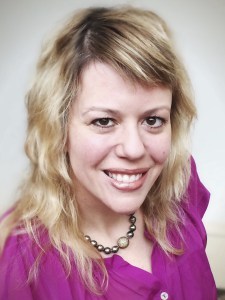 Katie enjoys her three professions—novelist, freelance journalist, and lawyer—for one reason: her love of the written word. Fiction or nonfiction, Katie thrives on putting thoughts to paper and sharing them with the world. She lives in Chapel Hill, North Carolina, where the energy of the campus and cafes inspires her writing. Her first novel, ENTANGLEMENT was published in June 2015 by Velvet Morning Press. You can read the prequel novella now, LOVE AND ENTROPY, and grab a free copy of Katie’s writing guide, WRITING ISN’T SEXY, by subscribing to her email list.
Katie enjoys her three professions—novelist, freelance journalist, and lawyer—for one reason: her love of the written word. Fiction or nonfiction, Katie thrives on putting thoughts to paper and sharing them with the world. She lives in Chapel Hill, North Carolina, where the energy of the campus and cafes inspires her writing. Her first novel, ENTANGLEMENT was published in June 2015 by Velvet Morning Press. You can read the prequel novella now, LOVE AND ENTROPY, and grab a free copy of Katie’s writing guide, WRITING ISN’T SEXY, by subscribing to her email list.
Katie contributes regularly to THE HUFFINGTON POST, THE CHRONICLE OF HIGHER EDUCATION, THE TOAST, DAME MAGAZINE and other national venues. (You can view her writing here.)
She earned her master’s degree in creative writing from the Writing Seminars at Johns Hopkins, where she attended on a fellowship. Katie has published five books on writing, the most recent with Oxford University Press, and although she has impeccable grammar, she would never correct yours. You can find Katie on Twitter at @krgpryal, on Facebook at facebook.com/katieroseguestpryal, on her blog at katieroseguestpryal.com.
Purchase Entanglement: http://www.amazon.com/Entanglement-Ka...
Blog: http://katieroseguestpryal.com
Book Website: http://entanglementnovel.com
Newsletter: http://bit.ly/pryalnews
Facebook Author Page: https://www.facebook.com/katierosegue...
Twitter: https://twitter.com/krgpryal
Goodreads Author Page: https://www.goodreads.com/author/show...
Katie’s Huffington Post Articles: http://www.huffingtonpost.com/katie-r...
Entanglement Pinterest: https://www.pinterest.com/katiepryal/...








Women's Fiction Writers
- Amy Sue Nathan's profile
- 543 followers


